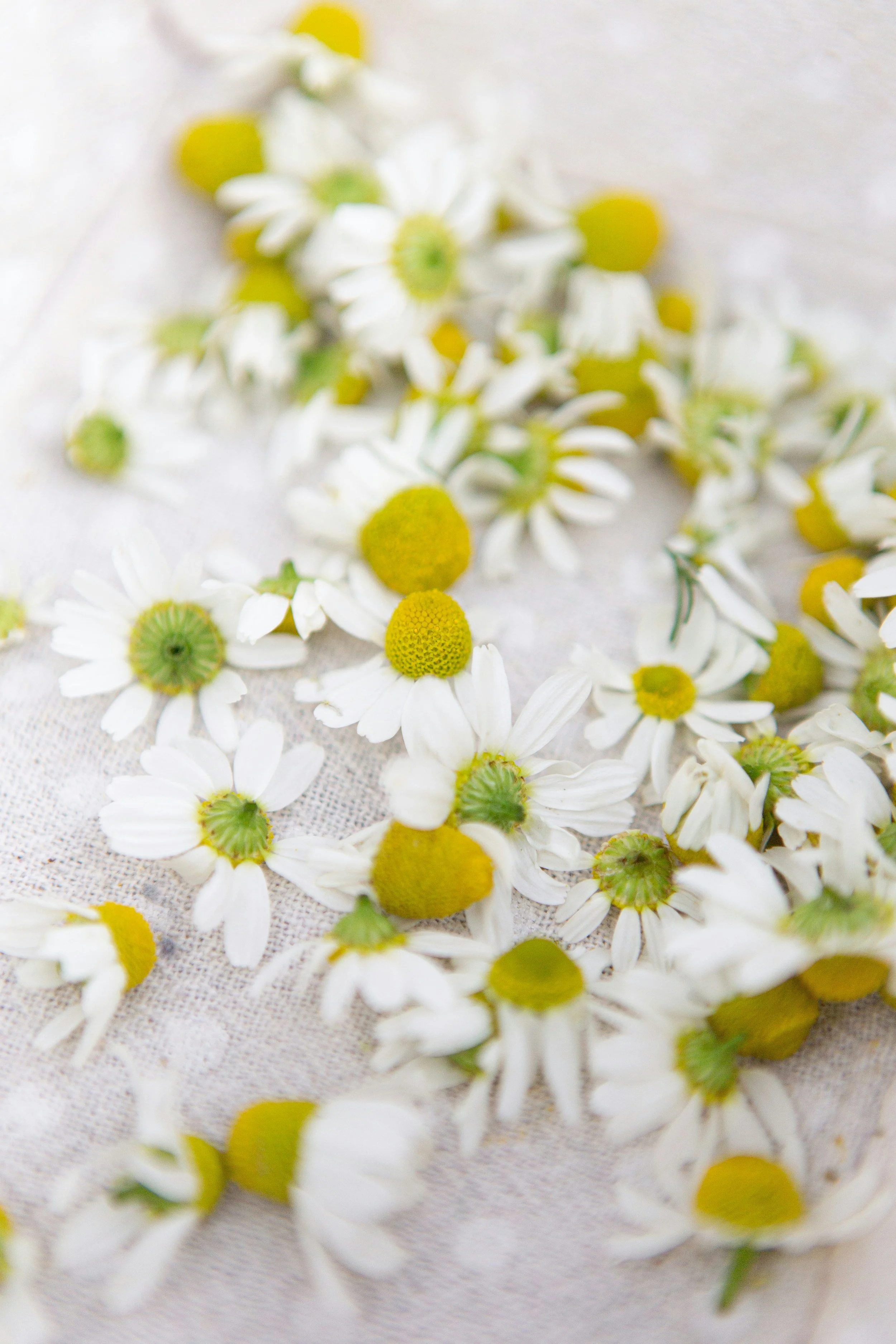Chamomile — Inner Peace
Chamomile:
Planetary Energy: The Sun and the Moon
Parts Used: Flowers
Concoctions: Teas and Tinctures
Actions: Soothes anxiety, insomnia, depression, digestive upset; also used as a mild antiseptic
Chamomile carries a quiet kind of strength—the kind that doesn’t force but gently invites. Its energy is soft, restorative, and full of grace. With the glow of the sun and the intuition of the moon, Chamomile wraps the body and spirit in a blanket of calm. It brings peace, purity, delight, and a sense of inner harmony, making it one of the most essential herbs to call on when tending to anxiety.
The word Chamomile is derived from the Greek chamomaela, meaning “grounded apple.” In Spain, it has been called manzanilla—“little apple”—for hundreds of years, a reference to the plant’s crisp, apple-like aroma.
Historically, Chamomile has been cherished across cultures and centuries. In ancient Egypt, it was considered sacred and often burned as incense to honor the sun god Ra. The Greeks and Romans brewed it into soothing teas to calm skin inflammations. During the Middle Ages, healers turned it into syrups and ointments for a variety of ailments. Even the Vikings trusted Chamomile—using it to ease digestive upset and to strengthen their hair through fragrant rinses.
Folk traditions add another layer of reverence. In Slovakia, it was said, “One should always bow before the curative powers of the plant.” In Germany, farmer’s wives would hang bundles of Chamomile inside their homes, believing that if someone with harmful intent entered, the plant would begin to sway. In Tudor England, Chamomile was planted to symbolize patience, humility, and resilience. It has always been more than a remedy—it was seen as a protector, a guide, and a quiet strength within the garden.
Though it is often associated with the sun, Chamomile’s healing properties are deeply aligned with the moon. The moon governs the emotional body, the gut, and the nervous system—the very places where anxiety often roots itself. Chamomile soothes these systems with ease, calming the fluttering in the belly, the tension in the chest, and the buzzing in the mind.
At an energetic level, Chamomile speaks directly to the solar plexus—the chakra associated with our sense of self, autonomy, and inner stability. This is also the region that governs the gastrointestinal tract, where so much of our emotional experience is processed. It’s no coincidence that anxiety often shows up as tightness, nausea, or a swirling unease in the belly. Chamomile’s medicine invites this center to soften. It gently releases the knots of fear, self-doubt, and inner tension that collect in our core. Like a warm hand on the stomach, Chamomile calms the nervous system, settles the gut, and restores a sense of empowered ease.
Interestingly, some of the earliest uses of Chamomile were to soothe irritated skin. Today, we understand how inner turmoil can manifest outwardly—through eczema or other inflammatory skin conditions. Stress hormones like cortisol can weaken the skin barrier and stir up inflammation. And isn’t it fascinating to consider that the entire gastrointestinal tract is lined with epithelial tissue—our inner skin? Chamomile’s ability to soothe both the outer body and the inner lining feels like an herbal whisper: you are safe, inside and out.
Today, most people know Chamomile as a bedtime tea or gentle sleep aid. And while that’s true, its medicine runs far deeper. It can be sipped to calm digestive spasms, added to a warm bath to soothe the nerves, or tucked under a pillow as part of a calming ritual.
Chamomile remains an ancient ally for modern times—a soft-spoken companion for those walking through stress, seeking inner stillness, or simply trying to breathe a little easier.




